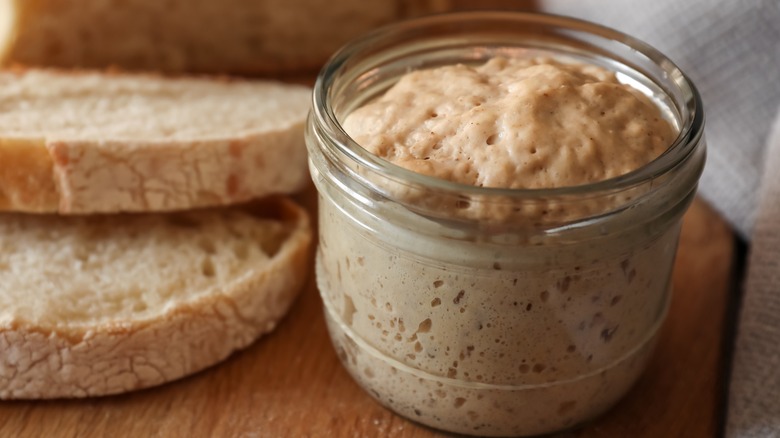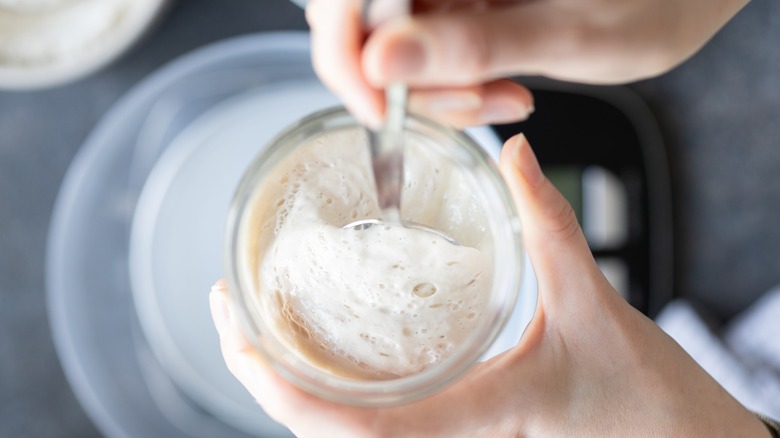The Tell-Tale Signs Your Sourdough Starter Is Dead
When baking sourdough bread, it's hard not to tap into your inner Dr. Frankenstein and scream, "It's alive!" as your sourdough starter rises and percolates with life, especially if you've conjured it from its component parts: flour and water. That's because sourdough is actually alive, with yeasts and lactic acid bacteria that feed the starter, leaven the bread, and put the sour in sourdough. Unfortunately, anything that lives can die, and you may also find yourself mourning the death of a starter that's doing little more than showing a sour expression.
Tell-tale signs that your sourdough starter is dead start with the appearance. If your starter looks inert and is not rising in the jar or showing the bubble that comes from live yeast expelling carbon dioxide, that's a bad sign. Another is a layer of tannish or clear alcohol called hooch that appears on its surface and blackens with oxidation over time. As this hooch is primarily alcohol, it often smells like nail polish remover or acetone. However, even with all these issues, enough life may still remain in your sourdough starter to defibrillate it back into action. However, when mold arrives, either in the appearance — usually as pink and orange streaks, black specks, or fuzz — or the aroma, it's better to put your sourdough starter out of its misery and start again.
Bringing your sourdough starter back to life
Sourdough starters are remarkably resilient. Short of mold and extreme neglect, they can usually be resurrected. Start by either draining the hooch or mixing it back into the starter, which is perfectly safe. Next, toss out most of the existing starter, saving a small amount to rebuild from. From here, follow the standard 1:1:1 rule for sourdough starters, matching the weight of the remaining starter with equal amounts of flour and water — so a 1-ounce starter gets 1 ounce of flour and 1 ounce of water. Stir it well, cover, and leave for 48 hours, following the same process for making a new starter.
Resurrecting your starter — and keeping it alive — also means avoiding the contaminating mold. This starts with the ingredients. Old or improperly stored flour can grow mold spores that transfer to your starter, and the pesticides and chemicals in conventional and bleached flour can kill the yeasts and bacteria you want. That's why it's a good idea to use an organic, high-quality flour for baking sourdough bread. Also be sure to clean the equipment you use, especially the growing jar. Water can also make a difference, as municipal tap water is often laden with chlorine and other chemicals that can keep your sourdough starter from thriving. Using filtered or spring water should help create fantastic fresh-baked sourdough bread and perhaps it will become the next sourdough starter to last a thousand years.

